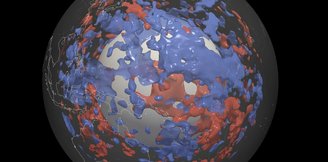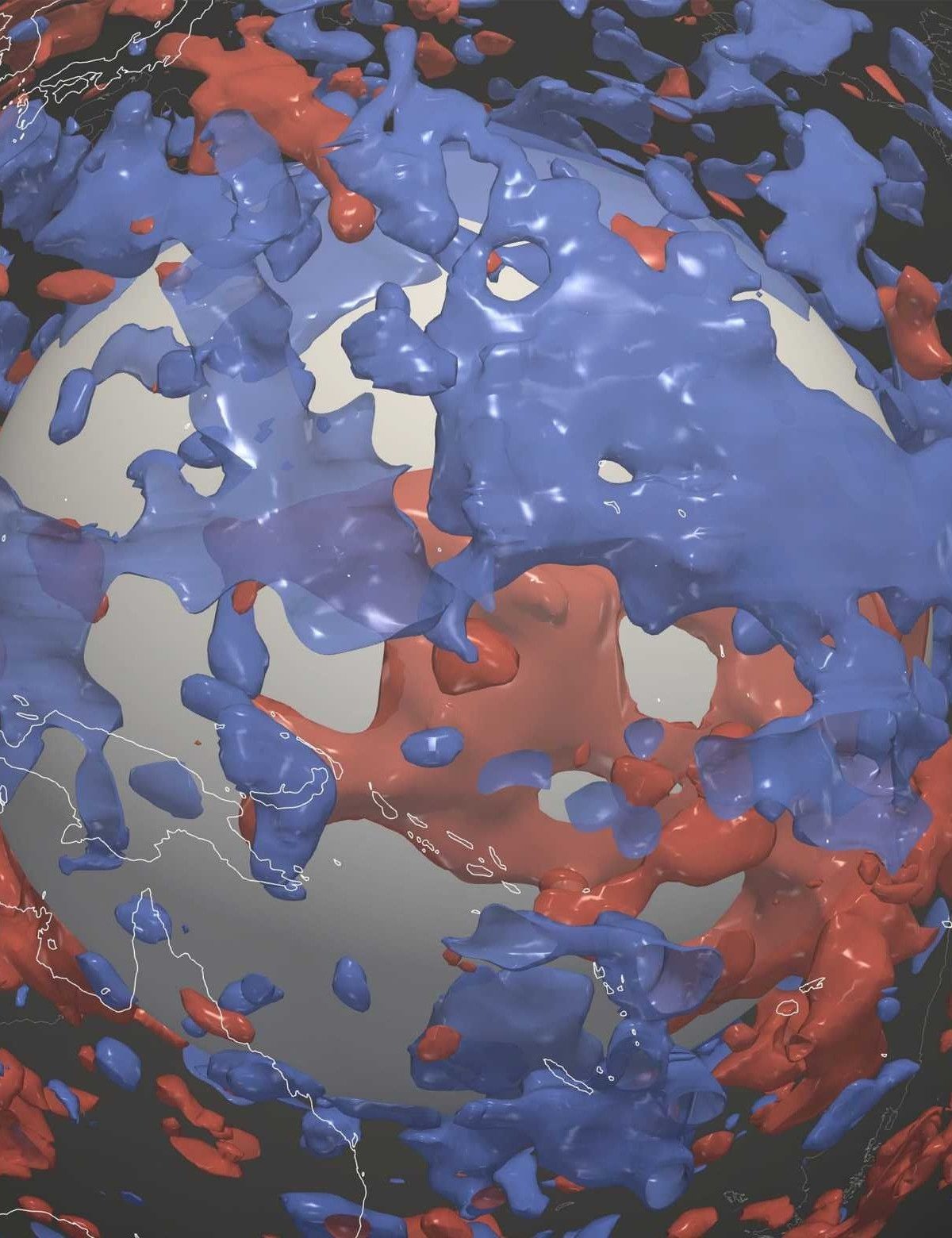Recently a new high resolution model It presented startling details of sunken worlds beneath the Pacific Ocean. In a study published in the scientific journal Scientific Reports, a team of geophysicists from the Federal Institute of Technology Zurich (ETH Zurich) used data from the Earth’s lower mantle to produce models that reveal these details.
You may have heard the idea that scientists know more about the properties of stars, planets, and other celestial bodies in the universe than they do about the depths of Earth’s oceans. Although this is more of a metaphor than a fact, it is true that there is still much to discover in the underwater worlds.
Scientists at ETH Zurich, working in partnership with the California Institute of Technology (Caltech), Regions on Earth that appear to be remnants of tectonic plates sunk beneath the Pacific Ocean. In an official statement, they hypothesize that a ‘lost world’ exists beneath the ocean.
To reach this conclusion, researchers By analyzing seismic data from different parts of the planet, it has made it possible to map the location of submerged tectonic plates along the Earth’s mantle. These data provide a valuable basis for investigating processes occurring deep within the Earth.
“Determining the structure of the world is fundamental to revealing its internal dynamics. Seismic tomography reveals positive wave velocity anomalies across the mantle that are spatially related to the expected locations of subducting plates. This correlation has been widely applied in plate reconstructions and geodynamic modelling,” explains the introduction to the study.
Why is it so difficult to collect data from the Earth’s interior?
It is not possible to directly observe the interior of the Earth. Because there is no technology that can collect samples by drilling into the core of the planet.. That’s why scientists rely on indirect methods, such as seismic wave analysis, to study its inner layers.
This limitation is one of the main contributions to the idea that we know space better than the depths of Earth’s oceans; but both areas still pose major challenges to science. So why is it so difficult to collect data inside planet Earth? There are several reasons.
One of the biggest challenges is the extreme pressure the planet puts on drilling equipment. For example, The Kola Superdeep Well in Russia is the deepest drilling ever undertaken by humanity; is about 12 kilometers.
For comparison, the center of the planet is located approximately 6,371 kilometers below the surface. In other words, we are a long way from collecting samples to closely observe the properties of the Earth’s interior.
It is important to emphasize that neither equipment nor people can reach extreme depths. Currently, experts recommend that recreational diving be limited to a maximum of 40 metres, although some technical divers have already reached over 300 metres; In the second case, the pressure is more than 30 times higher than at the surface.
Anyway, It is clear that it is impossible to travel to the center of the Earth even with the most modern submarines currently available.
Worlds beneath the Pacific Ocean
Unlike most studies on the subject, the ETH Zurich researchers did not limit themselves to a single type of seismic data in their high-resolution model. They emphasize this they used all kinds of waves produced by earthquakes; This technique is called full waveform inversion.
These underwater worlds mentioned in the research They may be traces of plate tectonics in subduction zones. The most impressive aspect of this discovery is that, according to available information, these plates should not be found in these locations. The study points out that it is likely that they are composed of materials and processes that are not yet fully understood.

Subduction zones are areas where a tectonic plate (usually an oceanic plate) subducts beneath another plate, where it gradually sinks into the Earth’s mantle.
Sinking over millions of years, these materials can reach extreme depths and be reprocessed by the planet’s internal dynamics. Scientists believe that these very regions may contain remnants of “sunken worlds,” fragments of ancient plates that could help reveal Earth’s geological history.
“We think the anomalies in the lower mantle are of various origins. It may be ancient, silica-rich material that has been there since the formation of the mantle approximately 4 billion years ago and has survived despite convective movements in the mantle, or it may be the formation of iron-rich rocks as a result of these mantle movements over billions of years.” regions where it accumulates,” said Thomas Schouten, co-author of the paper and a doctoral student at the Institute of Geology at ETH Zurich.
As the study explains, the data was processed on the Piz Daint supercomputer at CSCS in Switzerland. As well as identifying a ‘new’ submerged zone beneath the western Pacific, scientists have also identified similar areas in major oceans and the interiors of continents.
For Schouten, Developments in recent years make clear that a scientific effort is still needed to understand the Earth’s interior more deeply.
Until now, analyzing the speed of seismic waves has been the main focus of researchers, but this parameter alone is not sufficient to reflect the complexity of rock properties at extreme depths. Therefore, they underscore the need for technological and methodological advances to improve understanding of the Earth’s interior.
With advances in technology, the study of ocean depths has become a subject of increasing interest among scientists. Want to learn more about the subject? Understand how the Pacific tectonic plates have major faults and are pulled apart. Until next time!
Source: Tec Mundo
I’m Blaine Morgan, an experienced journalist and writer with over 8 years of experience in the tech industry. My expertise lies in writing about technology news and trends, covering everything from cutting-edge gadgets to emerging software developments. I’ve written for several leading publications including Gadget Onus where I am an author.












